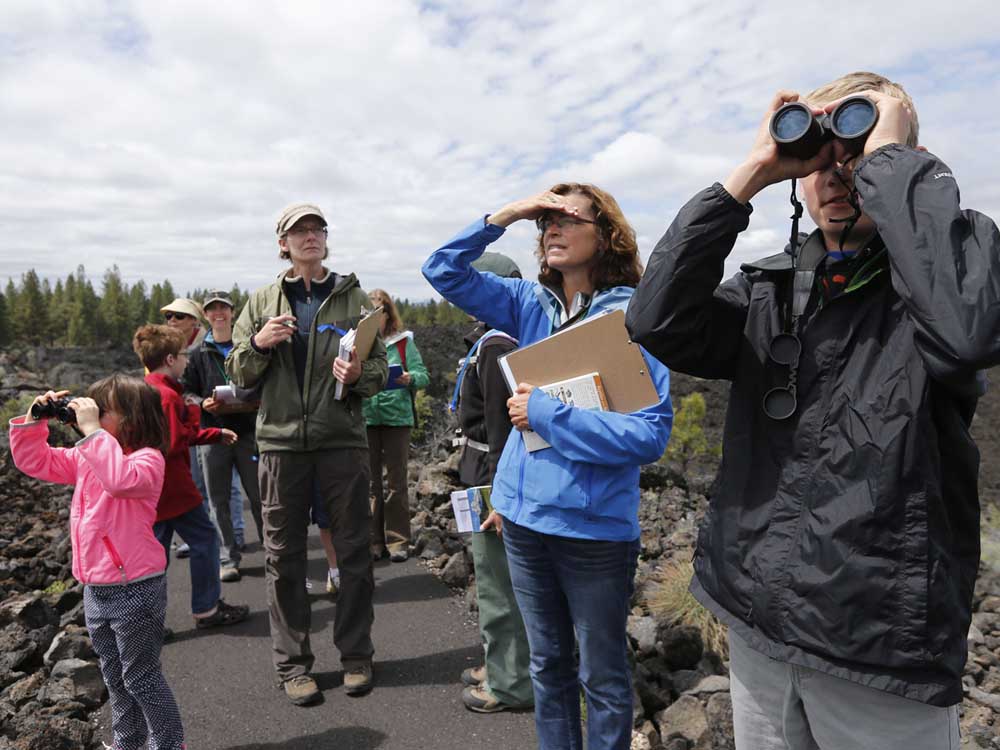“BioBlitz” IDs creatures at Lava Lands
Published 12:00 am Sunday, May 24, 2015

- Joe Kline / The Bulletin From right, Henry Williams, 12, of Ashland, and mom, Janese Williams look along with others for wildlife during the BioBlitz on Saturday at the Lava Lands south of Bend. Karen Gentry with the Deschutes National Forest said the information collected during the BioBlitz helps land managers better understand how plant and animal populations are doing.
Cooler temperatures put only a small damper on Saturday’s BioBlitz, a plant and animal tracking and cataloging event held at the Lava Lands south of Bend.
Coordinated by the National Geographic Society, the BioBlitz is an effort to identify as many species as possible in a given area in 24 hours, according to Fort Rock Ranger District botanist Charmane Powers. With the sun peeking through only occasionally, the lizards and other small reptiles often seen skittering around the lava fields were nowhere to be found.
“What do they do when it’s cold and cloudy?” asked Janese Williams, an Ashland resident who joined the outing on Saturday.
“Watch Netflix?” offered Powers.
“Ah, Godzilla,” said Williams.
Karen Gentry with the Deschutes National Forest said the information collected during the BioBlitz helps land managers better understand how plant and animal populations are doing. Earlier Saturday morning, volunteers counted birds near Benham Falls, and later in the day, another group was set to head to the Lava Cast Forest to count mammals and birds.
“It helps having more eyes out there, and it helps the public learn about what’s out there living on their public lands,” Gentry said.
Animal life at the lava flow was limited Saturday, aside from a smattering of birds, several golden-mantled ground squirrels, a few deer tracks and the possible sighting of an American Pika, a guinea pig-like creature known to inhabit the area.
Leading a group of a dozen volunteers through the lava fields, Powers helped her “citizen scientists” identify several native shrubs, trees, grasses and varieties of penstemon, a flowering plant that has found a niche in the poor soils of the lava flow.
Powers said the volcanic landscape surrounding Lava Butte doesn’t support a wide variety of life. The flow dates back only about 6,000 years, she said, a blink of an eye on the geologic time scale.
“The pines have found a bit of a toehold here, but overall, it hasn’t been around long enough to weather into soil,” Powers said.
On the edge of the lava flow, the group found pinedrops, an unusual plant that shoots up from the soil looking like a sticky stalk of asparagus, then develops bell-shaped fruits. In the thick pine needle duff, they found the earthstar, a fungus that starts as a puffball before sprouting a starlike ring of mushroom flesh.
Joette Storm, a Bend resident who moved to Central Oregon from Alaska two years ago, said she learned a lot about her new home Saturday.
“I never knew how many kinds on penstemon there are, that I can grow in my yard,” she said. “There’s so many things to learn about the area.”
— Reporter: 541-383-0387,
shammers@bendbulletin.com






